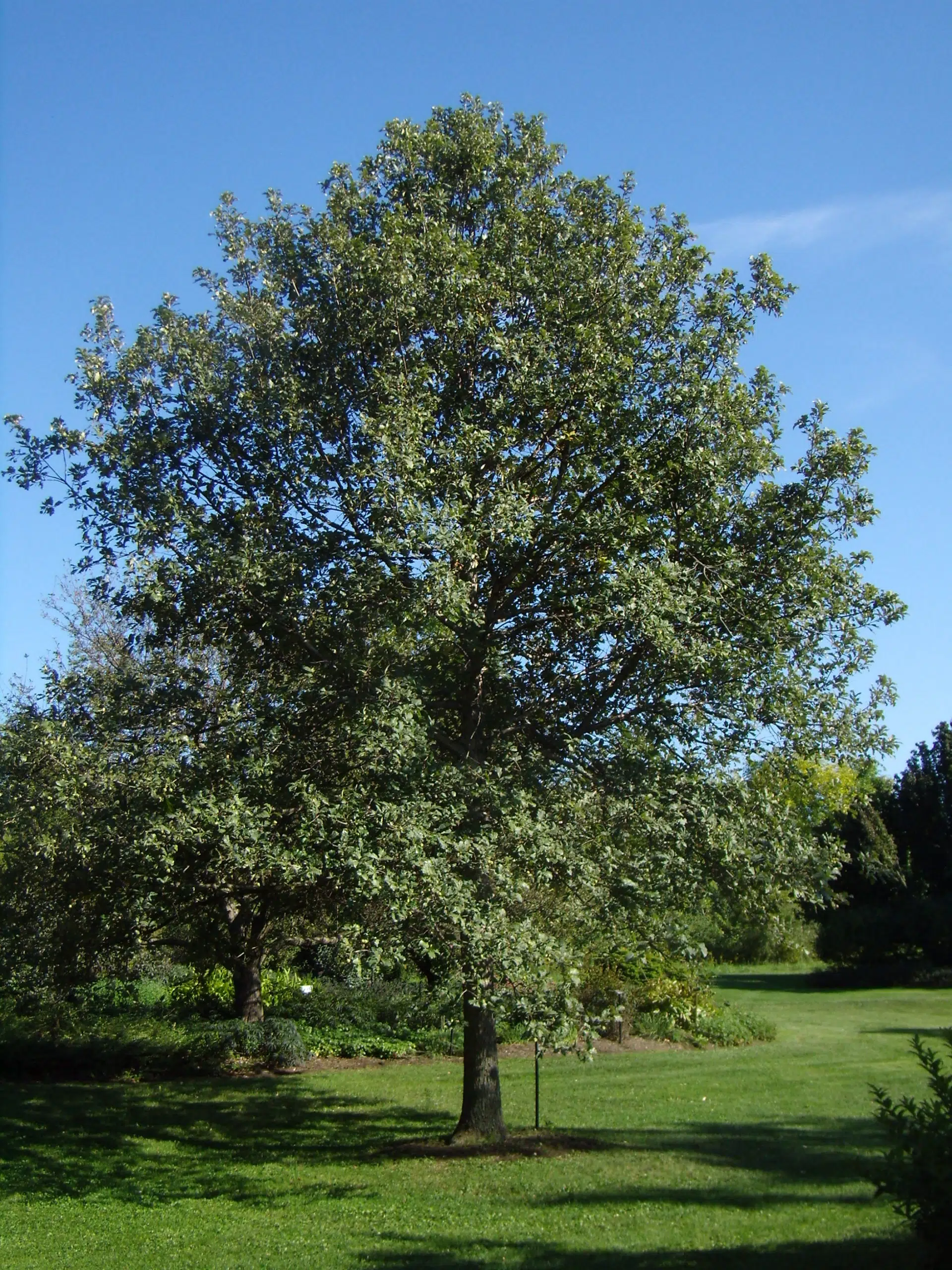Trees
Swamp White Oak
Quercus bicolor

Quercus bicolor is an excellent tree for the heavy, seasonally wet soils of northeast Ohio. Although pin oak, Q. palustris is much more common in our landscapes, the ruggedly handsome swamp white oak merits wider planting. Swamp white oak’s native range extends from Maine to Minnesota, south to the Ozarks in Missouri to Tennessee and North Carolina. It is a tree of wetlands and flood plains where it withstands seasonal drought. It is favored in the nursery trade on account of success following transplanting.
Quercus bicolor has performed admirably at The Holden Arboretum. An 82-year-old tree collected as seed in Cuyahoga County by Cleveland Museum of Natural History and arboretum staff member Arthur B. Williams is located between the first two parking lots by the Warren H. Corning Visitor Center. It now measures 73 feet tall with a spread of 60 feet and a trunk diameter (DBH) of 30 inches. This handsome species was one of five chosen for the R. Henry Norweb, Jr. Tree Allée.
The outline of young trees is oval to broadly oval. Their flaky reddish to purplish-brown bark, becomes grey and furrowed on mature trees. The epithet bicolor refers to the contrast of the deep green foliage with the whitish undersides although some may be only lighter green beneath, especially on juvenile or shaded limbs. Fall foliage is typically yellow brown, but on some russet-red in late October and early November. Young trees hold many of their leaves throughout the winter, dropping them in spring. Mature trees lose nearly all their leaves in fall.
Landscape uses include shade tree, street tree, screening, and naturalizing. “The oak” is our national tree. Swamp white oak was selected by the Society of Municipal Arborists in 1998 as their Urban Tree of the Year. It is a tree of considerable strength and longevity, reaching 300 years or more.
Swamp white oak is known to hybridize in nature with eight oaks in the white oak group including overcup oak (Q. lyrata), bur oak (Q. macrocarpa), and white oak (Q. alba). It has even been crossed with a narrowly upright English oak, Quercus robur ‘Fastigiata’. Witness the Quercus x warei [Kindred Spirit] along the path on the southeast side of the Display Garden measuring 19 feet tall and only 4 feet wide in 2021.
Quercus bicolor has great value for wildlife. Its acorns are favored by many mammals and birds including wild turkey, ducks, grouse, woodpeckers, chipmunks, squirrels, raccoons and deer. Acorns are typically produced at 20 years of age although some trees have acorns at 15 years. They are short on tannins and so are not nearly as bitter as acorns of the red oak group. This tree is wind-pollinated with 2-3 inch long inconspicuous yellow-green catkins appearing as the new leaves expand in early to mid-May. Insects rarely cause more than cosmetic damage to the foliage, fed upon by butterfly larvae such as the red-spotted purple.
Ethan Johnson, Plant Records Curator
March 2022
Form: Broad Rounded
Light: Full Sun
Site Selection: Open Spaces (Parks/ Lawns)
Size: 60-80 feet
Tolerances: Seasonally wet soils




